20 Graptoveria Varieties: Identification and Care Guide
Have you ever heard of Graptoveria? It’s a special type of succulent that combines the characteristics of two other plants: Graptopetalum and Echeveria. Sometimes you might come across its name as “xGraptoveria,” with the ‘x’ indicating its hybrid nature. These hybrid plants are quite unique and fascinating. In this blog, we’ll explore the wonderful world of Graptoveria, learning about its origins, characteristics, and how to care for this delightful succulent. So, get ready to dive into the enchanting realm of Graptoveria!
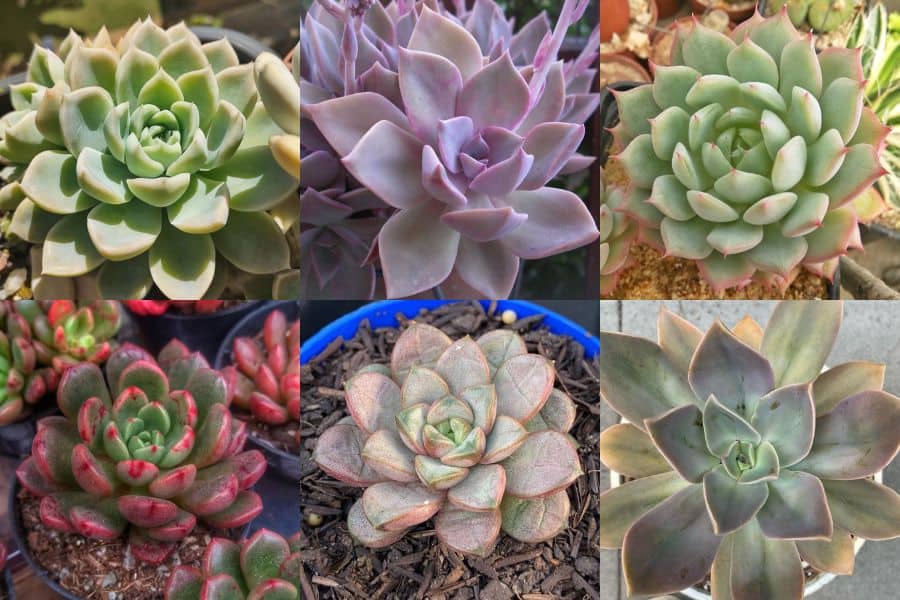
Related Post:
1,000 Types of Succulents With Pictures
Contents
Types Of Graptoveria
Graptoveria ‘A Grim One’
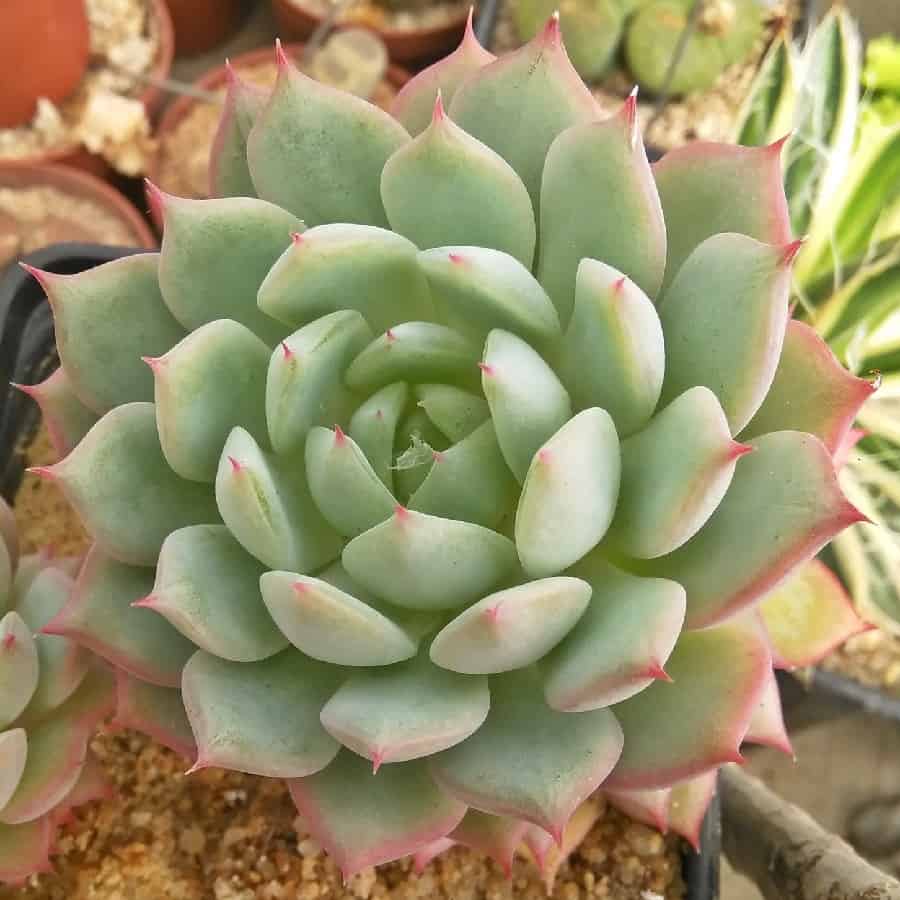
This variety showcases tight rosettes of fleshy silver-blue leaves with captivating flowers. It closely resembles the Echeveria Moonglow, but with leaves that turn red faster. The flowers are a beautiful sun yellow, adorned with tiny fire-orange dots in a loose band across the petals.
Graptoveria ‘Acaulis’
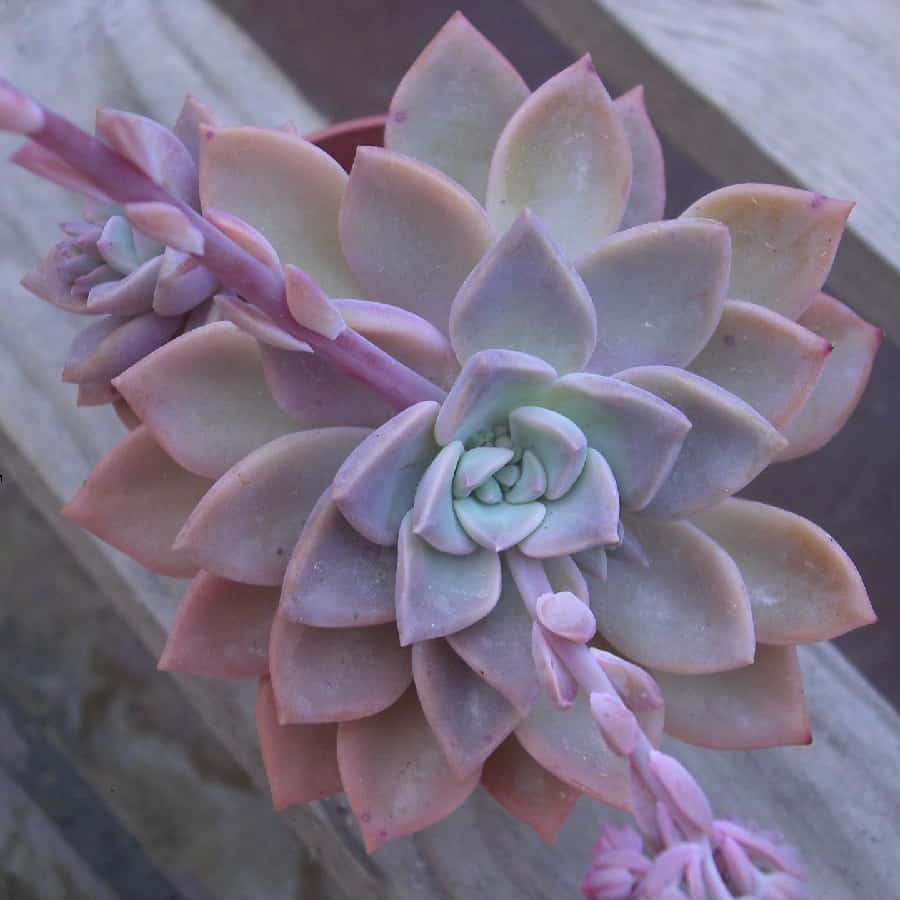
Believed to be a hybrid of Graptopetalum paraguayense and Echeveria amoena, this succulent shrub forms rosettes of glaucous pearly-pink leaves that deepen in color during winter. The leaves can reach up to 2 inches in length, varying in size and featuring plain yellow petals or red dots. The flower stem can grow up to 8 inches tall.
Graptoveria ‘Amethorum’
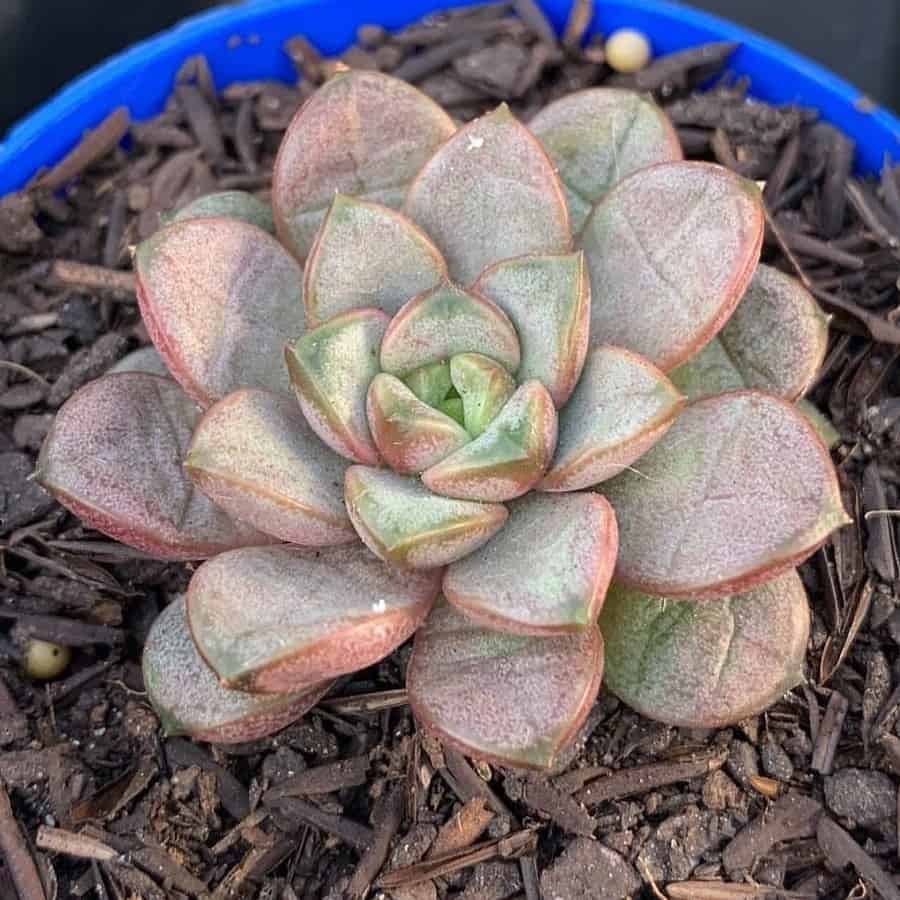
A rare hybrid of Graptopetalum amethystinum and Echeveria purpusorum, this variety boasts thick speckled sea green to frosty silver leaves. When exposed to bright sunlight, the leaf edges can blush pink or red. The leaves have a chunky appearance with a faint line running down the center.
Graptoveria ‘Bashful’
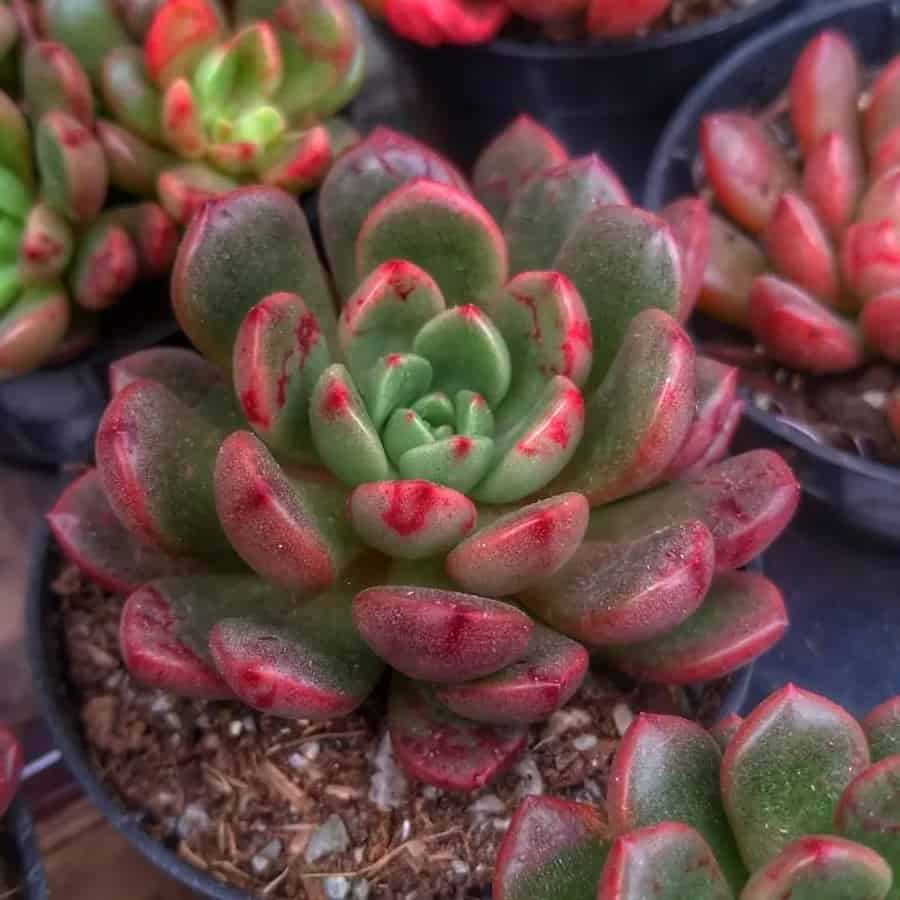
An intergeneric hybrid of unknown parentage, Graptoveria Bashful forms stemless rosettes of mint green leaves. The leaves transform into rosy pink hues with direct sunlight and cooler temperatures. These rosettes can grow up to 3 inches in diameter. Pink flowers bloom on long, arching stems.
Graptoveria ‘David Cumming’
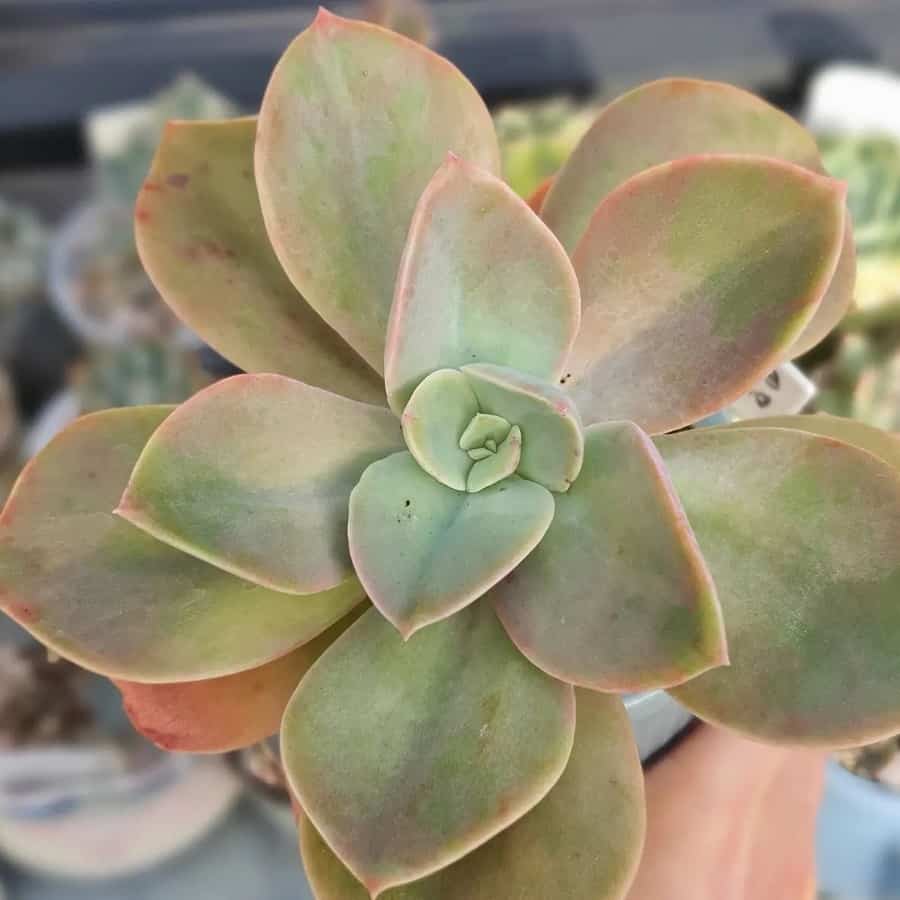
This intergeneric hybrid, with unknown parentage, produces rosettes of fleshy leaves in shades of green, light yellow, and apricot to pink. The rosettes can reach an impressive size of up to 7 inches in diameter. In spring and summer, star-shaped flowers in white to cream hues with a touch of pink grace this cultivar.
Graptoveria ‘Debbie’

A cross between Graptopetalum amethystinum and an unknown Echeveria species, Graptoveria Debbie features soft pink rosettes covered with a powdery, pastel coating called farina. With exposure to bright sun, hints of orange may appear. This plant blooms with small apricot flowers in spring.
Graptoveria ‘Douglas Huth’
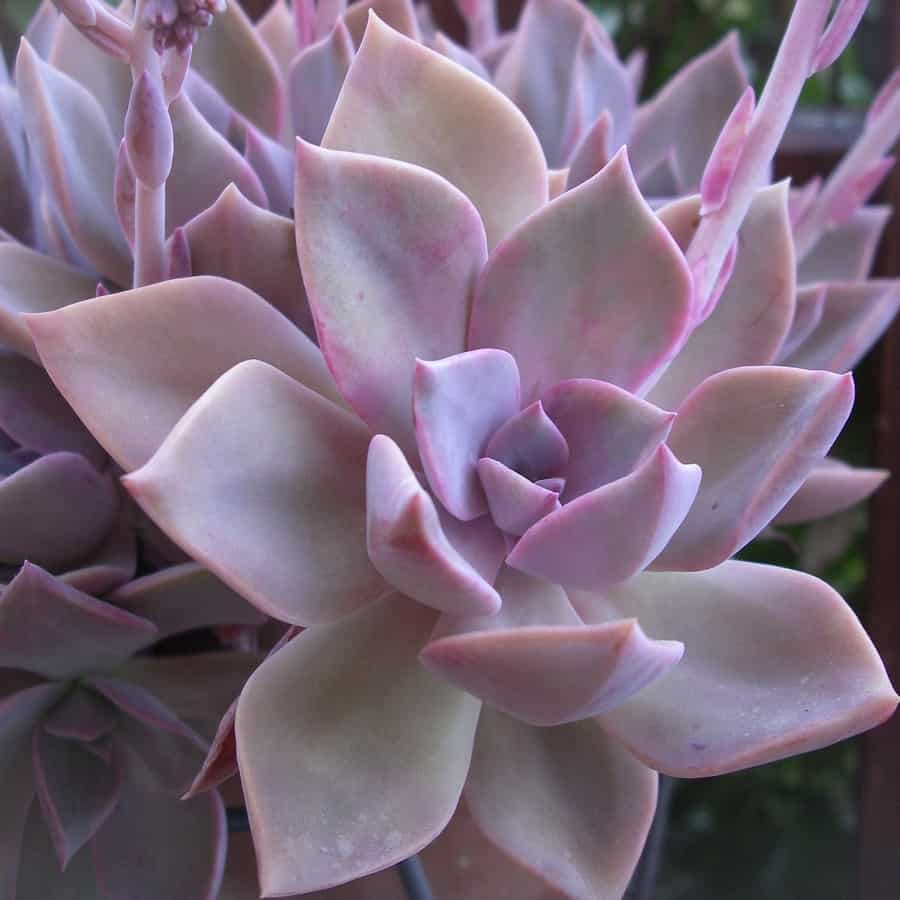
With gorgeous colors, Graptoveria Douglas Huth is an intergeneric hybrid of Graptopetalum paraguayense and possibly Echeveria gigantea. In bright sunlight, it can display lovely pastel pink tones, while shaded conditions bring out blue-green hues. The wide leaves, coated with farina, give this rosette an enchanting resemblance to a lotus flower.
Graptoveria ‘Fantome’
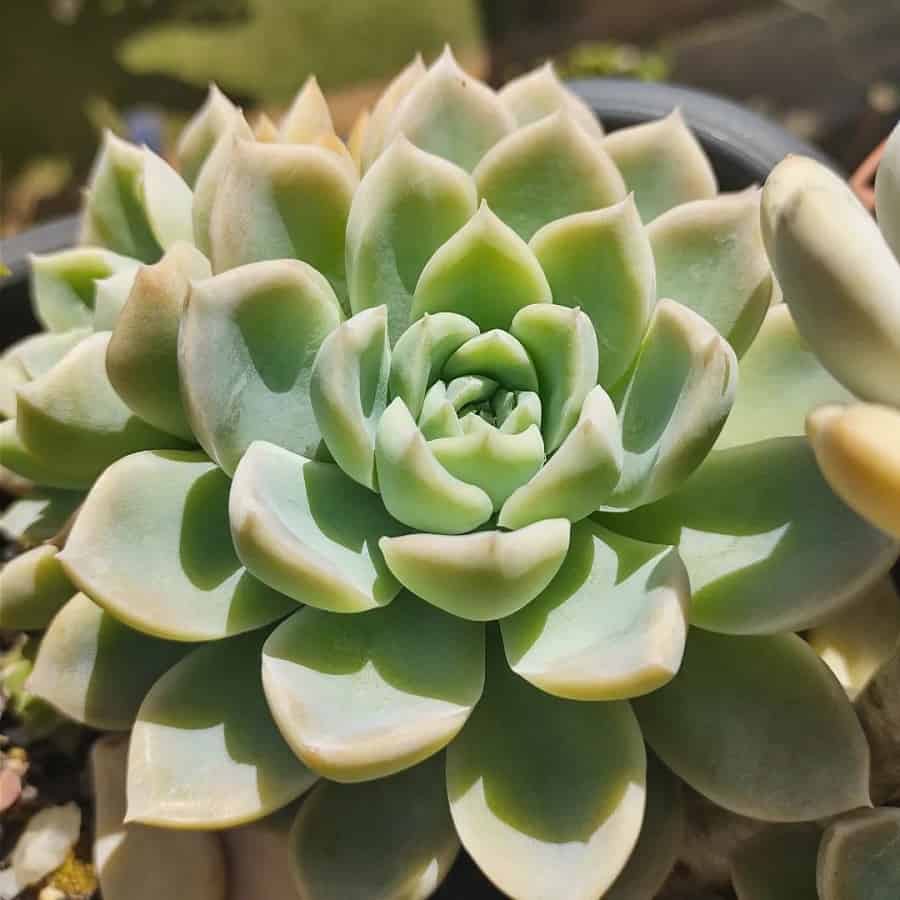
Graptoveria Fantome showcases a silvery rosette of icy leaves. This variety grows short stems and produces multiple branches and offsets, making propagation easy. Look forward to a striking display of yellow flowers on a large stalk.
Graptoveria ‘Fred Ives’
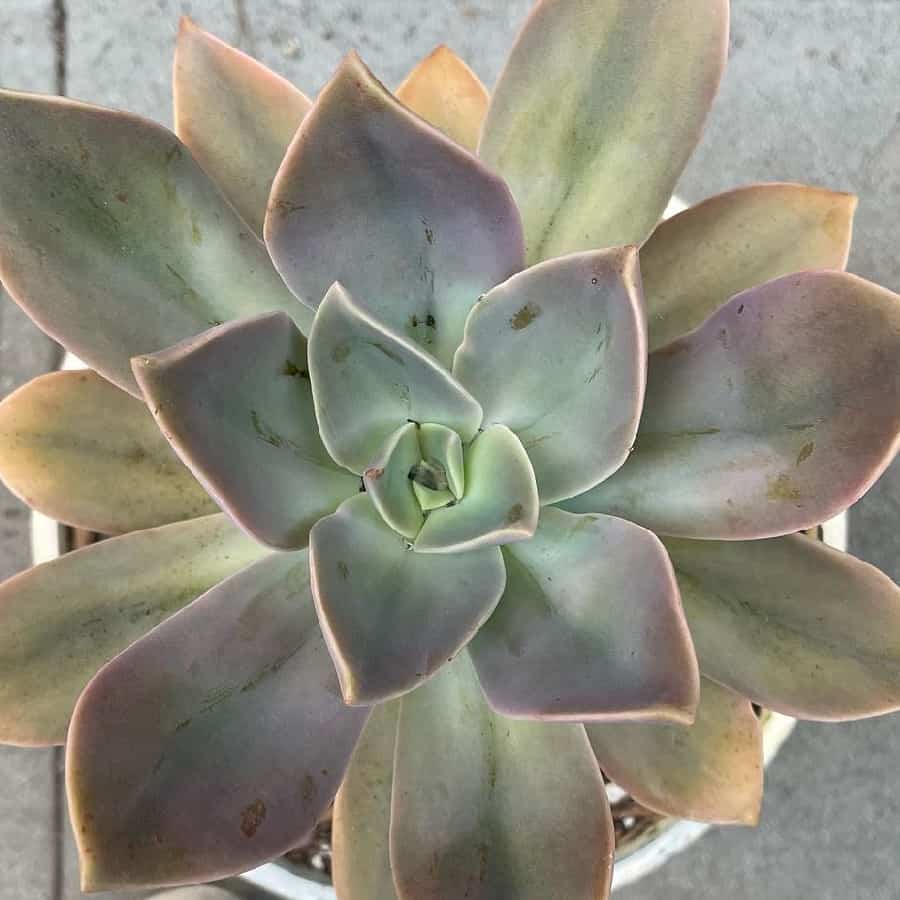
A cross between Graptopetalum paraguayense and Echeveria gibbiflora, Graptoveria Fred Ives is a vigorous grower, forming large shrubs that can take over a garden area if left unchecked. Its rosettes can grow up to 8 inches tall and 12-15 inches wide on short stems ranging from 4-12 inches in height.
Graptoveria ‘Harry Watson’
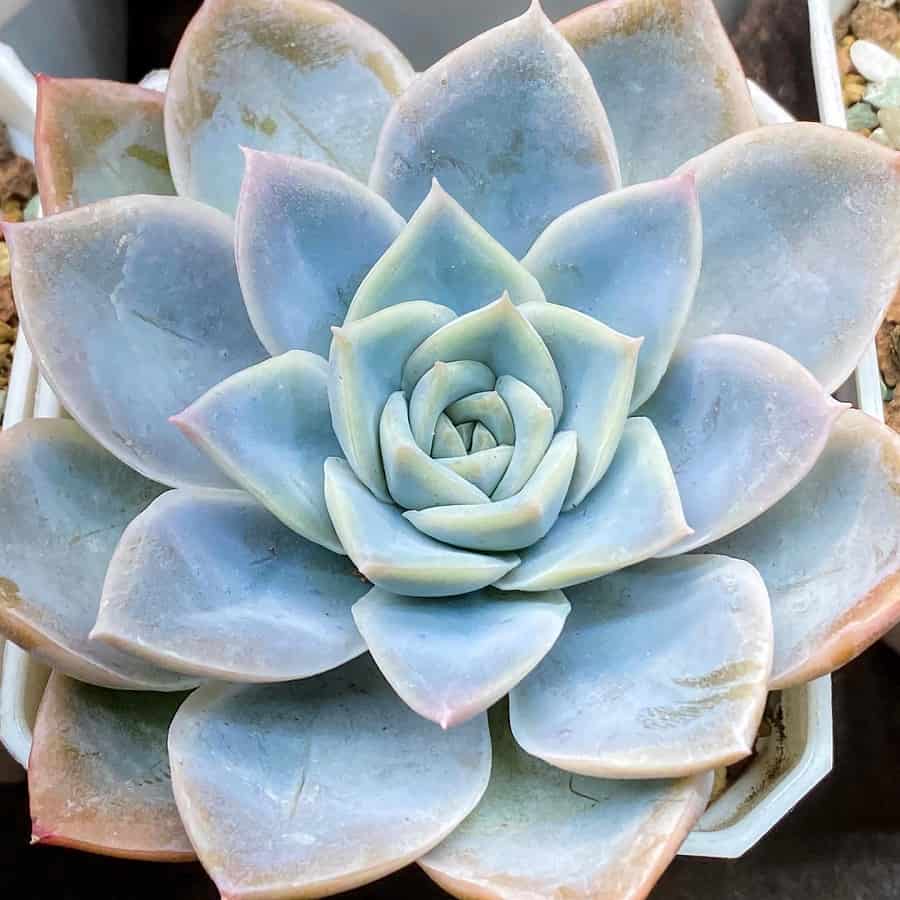
Graptoveria Harry Watson showcases lovely stemmed rosettes with pastel pink to blue-green leaves. The matte appearance comes from a powdery wax coating called farina, which also protects the plant in full sun. This hybrid, a cross between Graptopetalum paraguayense and Echeveria ‘Rubella’, can reach a diameter of up to 6 inches when mature.
Graptoveria ‘Lovely Rose’
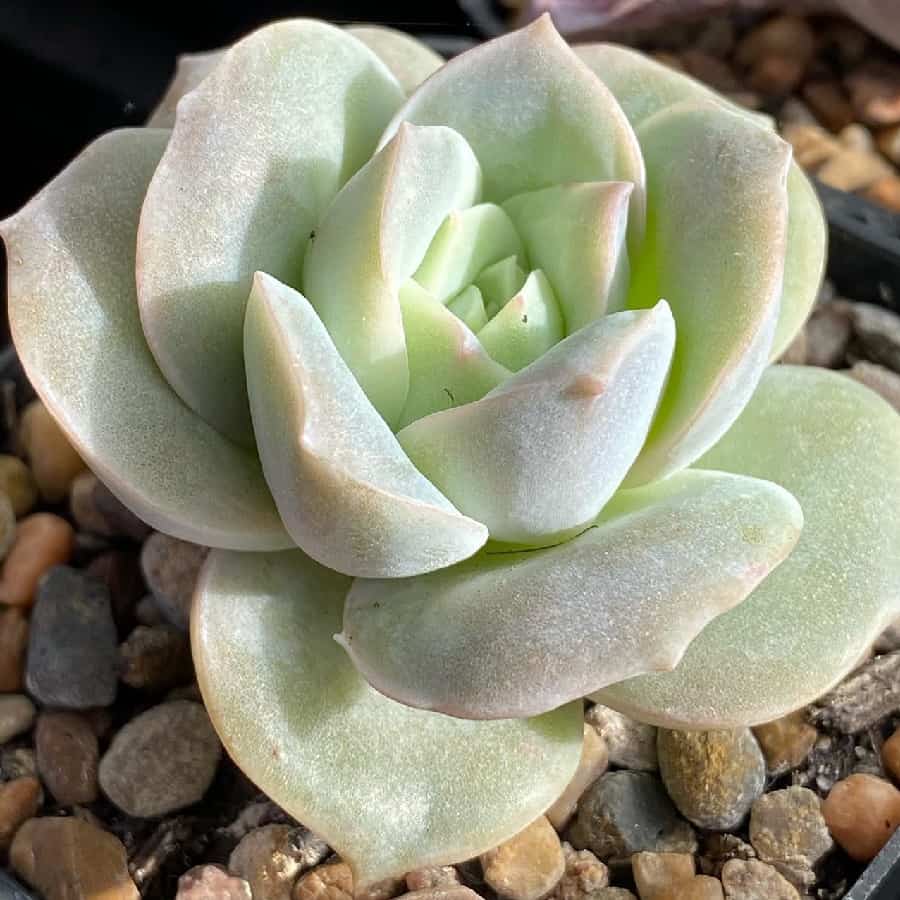
A rare Korean hybrid, Graptoveria Lovely Rose features plump, fleshy, gray-green leaves tightly clustered like a beautiful rose atop a bare stem.
Graptoveria ‘Moonglow’
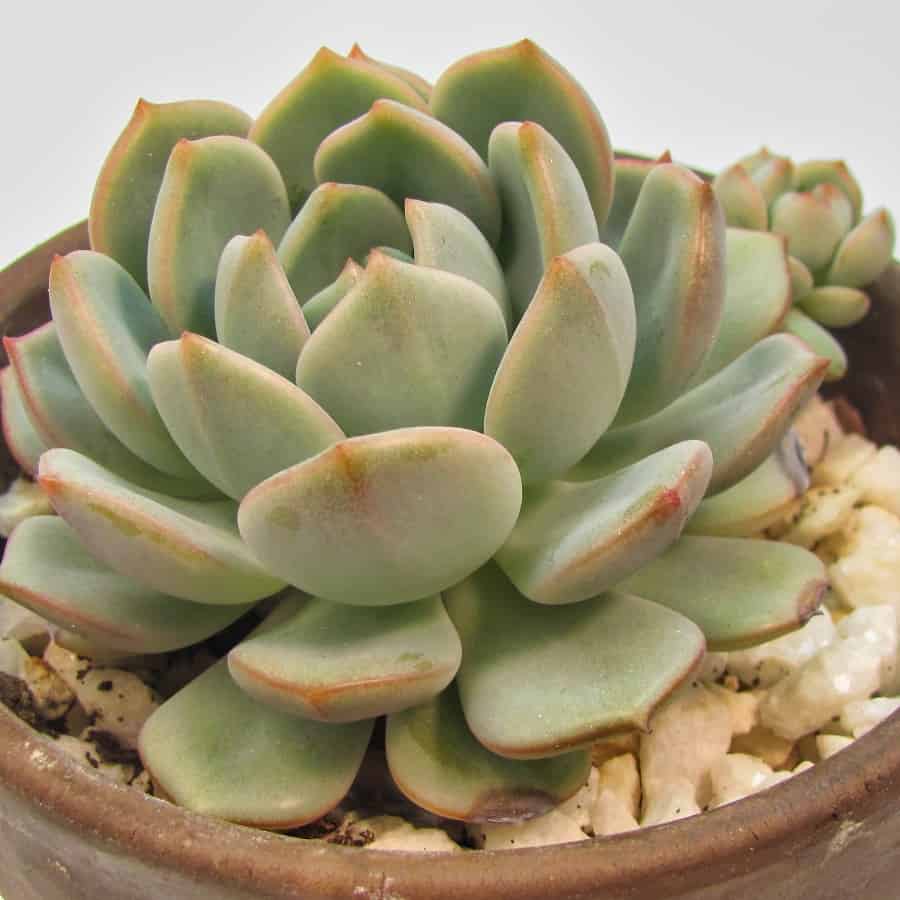
An intergeneric hybrid of unknown parentage, Graptoveria Moonglow forms rosettes of thick greenish-ivory leaves. These rosettes can reach up to 6 inches in height and 10 inches in diameter, forming tight clumps with offsets. Small upright flowers in orange-yellow hues bloom on short branches during late winter and early spring.
Graptoveria ‘Olivia’
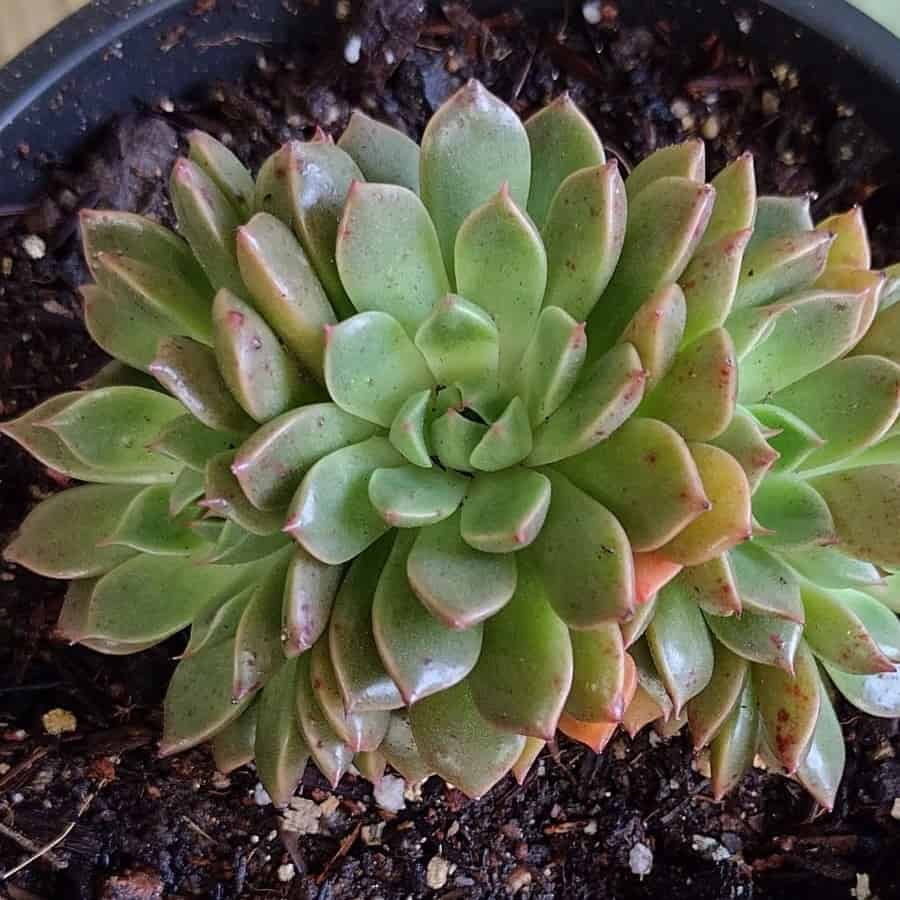
Graptoveria Olivia is an intergeneric hybrid of undisclosed parentage, showcasing an olive green rosette with pink flushed leaf margins and a bronze sheen. In the growing season, it produces tall bloom stalks with pale yellow flowers.
Graptoveria ‘Opalina’

This cultivar is a cross between Graptopetalum amethystinum and Echeveria colorata, resulting in an opalescent rosette that requires minimal maintenance. The powdery blue-green leaves exhibit pink flushing at the edges under sunnier conditions. With time, this variety can develop a rosette diameter of up to 8 inches, forming clusters of offsets at the base.
Graptoveria ‘Platinum’
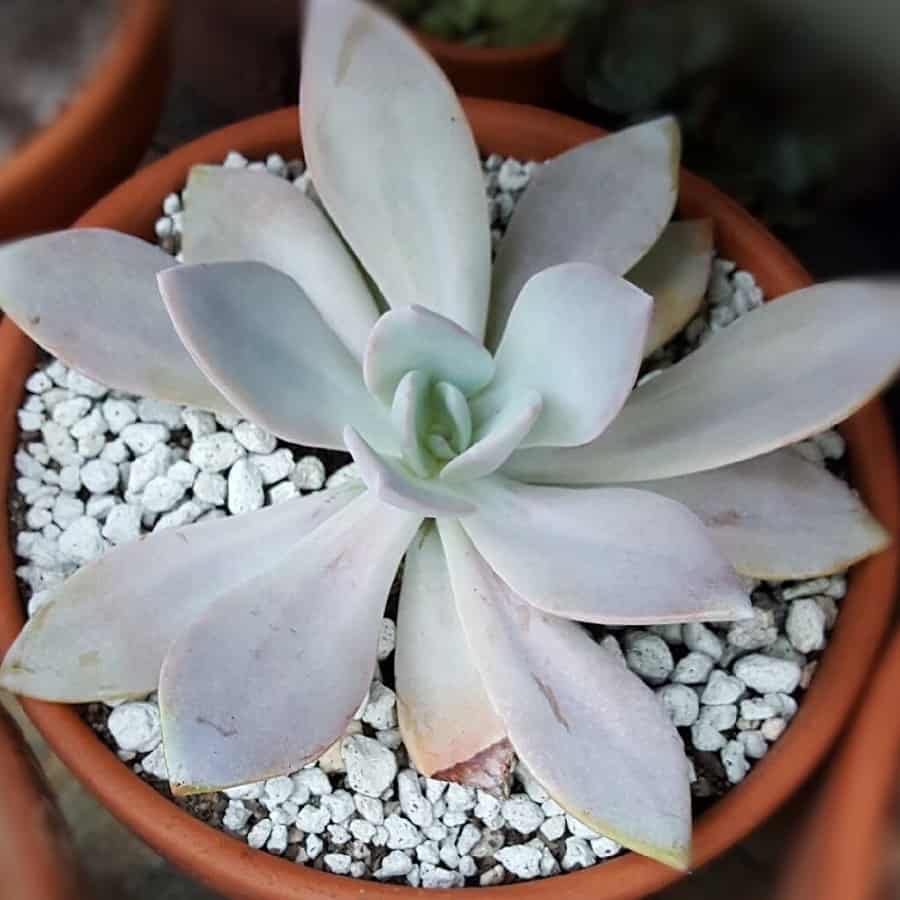
An intergeneric hybrid of unknown parentage, Graptoveria Platinum forms attractive rosettes of fleshy, almost white leaves, often displaying shades of blue-green and occasionally pink edges. The delicate-tinted flowers add an unusual touch.
Graptoveria ‘Silver Star’
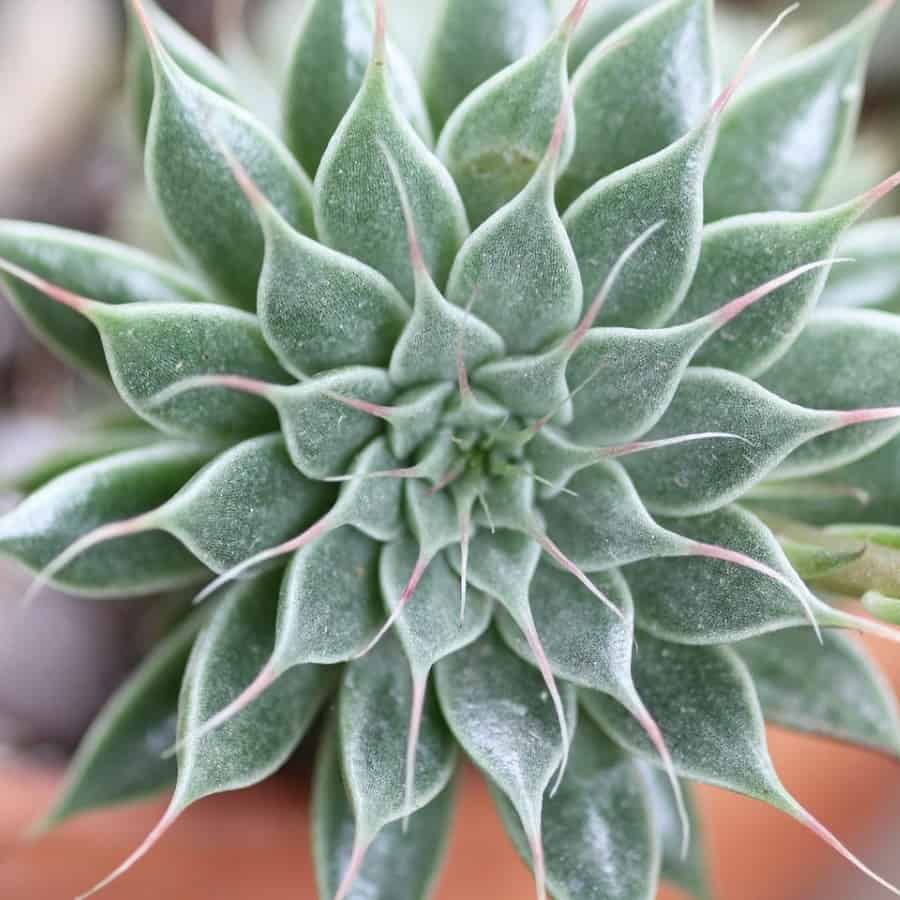
A low-growing hybrid succulent, Graptoveria Silver Star combines Graptopetalum filiferum and Echeveria agavoides ‘Multifida’. The rosettes are silvery-green, with each leaf tip featuring a pinkish to reddish bristle. These rosettes can grow up to 4 inches in diameter.
Graptoveria ‘Spirit of ’76’

Originating from an unknown Graptopetalum and Echeveria shaviana cross, Graptoveria Spirit of ’76 is a small succulent shrublet. Its rounded leaves showcase lovely lilac to pink-gray colors. Bell-shaped flowers in pinkish-orange hues bloom during spring and summer. This variety can sometimes be mistaken for the more common Graptoveria Debbie.
Graptoveria ‘Titubans’
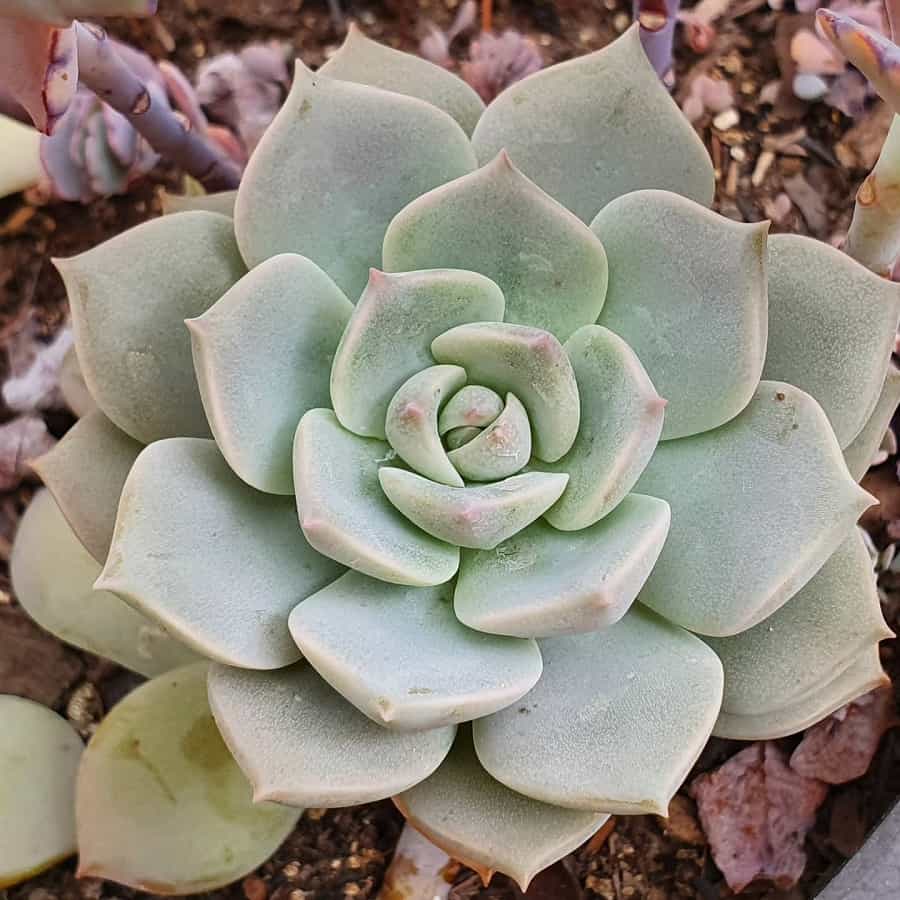
Graptoveria Titubans results from a cross between Graptopetalum paraguayense and Echeveria derenbergii. It forms compact rosettes of grey-blue leaves on creeping stems. These rosettes freely produce dense carpets or cushions, growing up to 8 inches tall.
Graptoveria ‘Topsy Debbi’

This hybrid succulent, a cross between Graptoveria Debbie and Echeveria runyonii ‘Topsy Turvy’, is also known as Graptoveria Lilac Spoons or Echeveria Cupid. It features unique spoon-shaped lilac-grey leaves with a waxy, powdery coating. The leaf shape varies depending on the genetic balance of the parent plants, and the colors intensify during cooler months.
Graptoveria ‘Worthy One’
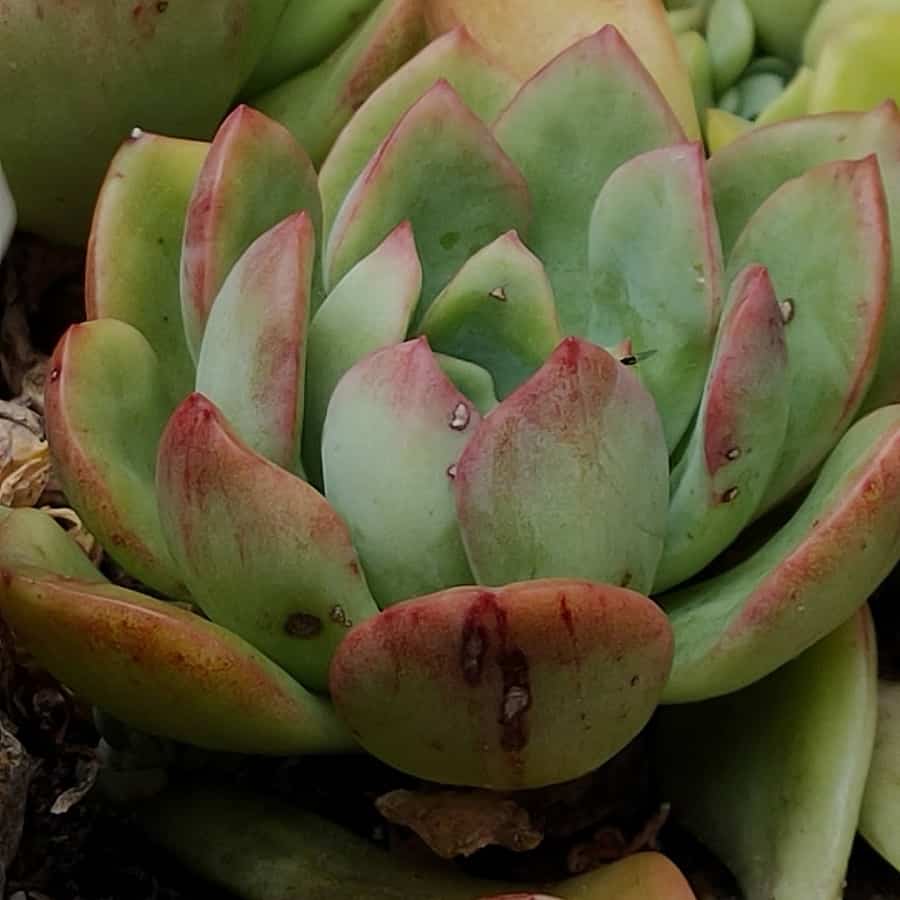
Graptoveria Worthy One, an intergeneric hybrid of undisclosed parentage, forms stemless rosettes of thick, juicy bluish-green leaves. These rosettes can grow up to 6 inches in diameter and freely produce dense mounds. Yellow, bell-shaped flowers grace this variety during summer.
Now that we’ve explored these amazing Graptoveria types, you’ll have a deeper appreciation for their unique charm and beauty. Experiment with different varieties and watch as your collection thrives!
Caring for Graptoveria Succulents
Light
Graptoveria needs plenty of sunlight to thrive. Place your plant outdoors during the summer to ensure it receives at least four to five hours of direct sunlight each day. Indoors, make sure to rotate the plant occasionally, so all sides get enough sunlight. Beware of too much intense sunlight, as it can cause sunburn.
If you’re keeping them indoors, you will need to supplement them with grow lights. We recommend the following as the best grow lights for succulents: 5 Top Rated Grow Lights for Succulents.
Watering
Like most succulents, Graptoveria doesn’t require much water. Wait for the soil to completely dry out before watering, then give it a good soak, ensuring excess water drains out. Underwatering is better than overwatering, as too much water can lead to root rot. Avoid watering the rosette to prevent rot and fungal disease. Water more frequently in spring and summer than in winter.
Soil
Graptoveria thrives in well-draining soil. Use standard cactus potting soil, which can be found at nurseries. If growing in containers, ensure there are drainage holes. Soil that stays damp or doesn’t drain well can cause root rot.
Climate
Graptoveria prefers hot, dry conditions and doesn’t tolerate cold temperatures or drafts well. It grows best indoors with average room conditions and humidity levels of 40% – 50%. During spring and summer, temperatures between 65°F and 80°F are ideal, while a few degrees lower is suitable for winter. Outdoors, temperatures of at least 68°F or 70°F are preferred.
Fertilizing
Fertilizing is generally not necessary for Graptoveria, as they are adapted to nutrient-poor soil. Over-fertilizing can lead to burn. However, if you want to promote healthy growth, use a diluted cactus or succulent fertilizer or low-nitrogen mix. Feed sparingly every 2 or 3 weeks during their active growing period in spring and summer.
Potting and Repotting
Choose a pot slightly larger than the root ball for your Graptoveria. This prevents the soil from staying too damp. Repot only when the plant outgrows its current container, usually in spring. Make sure the soil is completely dry before repotting.
How to Propagate Graptoveria: Step-by-Step Guide
Graptoveria can be propagated through offsets, leaf cuttings, or seeds. The easiest and most common method is by separating and propagating offsets or rosettes.
Offset Propagation
- Look for mature Graptoveria plants that have produced offsets, which are smaller rosettes forming around the base. These offsets can be easily separated and grown as new individual plants.
- Using a clean, sharp knife or scissors, carefully remove the offset by cutting it as close to the main stem as possible without damaging either plant.
- Allow the cut end of the offset to dry and callus over for a few days to prevent rotting.
- Once dry, plant the offset in a well-draining succulent soil mix, burying it just deep enough to hold it upright.
- Water the newly planted offset lightly, ensuring the soil is moist but not excessively wet.
- Place the planted offset in a location with indirect sunlight and provide gentle care as it establishes its roots. Avoid overwatering during this initial phase.
Leaf Cutting Propagation
- Select a healthy and mature leaf from the Graptoveria plant. Gently twist or cut the leaf from the main stem, ensuring you have a clean cut.
- Allow the cut end of the leaf to dry and callus over for a few days.
- Fill a small pot or tray with well-draining succulent soil mix.
- Place the dried end of the leaf into the soil, burying it partially so that it remains stable.
- Mist the soil lightly with water or use a spray bottle to moisten it.
- Place the pot or tray in a location with indirect sunlight.
- Keep the soil consistently lightly moist, but avoid overwatering, as excessive moisture can result in rotting.
Seed Propagation
- Collect mature seeds from a flowering Graptoveria plant.
- Prepare a seed tray or small pots with well-draining succulent soil mix.
- Scatter the Graptoveria seeds over the soil, ensuring they are spread evenly.
- Lightly press the seeds into the soil to ensure good contact.
- Mist the soil to moisten it, or lightly water with a watering can.
- Cover the seed tray or pots with a clear plastic sheet or place them in a sealed plastic bag to create a greenhouse-like environment.
- Place the tray or pots in a warm location with indirect sunlight.
- Keep the soil consistently moist but not waterlogged.
- Germination should occur within a few weeks. Once the seedlings have grown a bit and are strong enough to handle, they can be transferred to their own pots or containers with well-draining soil.
Remember to be patient when propagating Graptoveria, as it may take some time for the new plants to establish roots and start growing. With the right care and attention, you’ll soon have a collection of beautiful Graptoveria succulents.
FAQs
How big does Graptoveria grow?
Most Graptoveria species form rosettes around 8 inches wide, with some, like Graptoveria ‘Moonglow,’ reaching up to 10 inches wide.
Can I keep my Graptoveria indoors?
Yes, you can keep your Graptoveria indoors. They can adapt well to indoor conditions, but it’s important to provide them with enough sunlight. Place them near a bright window where they can receive at least four to five hours of direct sunlight each day.
How fast does Graptoveria grow?
The growth rate of Graptoveria can vary depending on the specific variety and growing conditions. Generally, they are relatively slow-growing succulents. It may take several months or even a few years for a Graptoveria to reach its maximum size.
What should I do if my Graptoveria becomes leggy or elongated?
If your Graptoveria becomes leggy or elongated, it is a sign that it is not receiving enough sunlight. Move the plant to a location with brighter light conditions, preferably near a sunny window or in a spot where it can receive more direct sunlight. Trimming back the elongated stems can help the plant to develop a more compact and aesthetically pleasing appearance.
How do I know if my Graptoveria is getting too much or too little water?
Overwatering and underwatering can both have negative effects on Graptoveria. Signs of overwatering include yellowing or wilting leaves, mushy stems, or the presence of root rot. If you notice these signs, reduce watering and allow the soil to dry out. Underwatering can cause wrinkling or wilting leaves, indicating that the plant needs more water. It’s important to find a balance and water your Graptoveria when the soil is dry, but not completely bone dry.
Are all Graptoveria varieties winter hardy?
Not all Graptoveria varieties are winter hardy. Some varieties are more cold-tolerant and can withstand lower temperatures, while others are more sensitive to frost and cold conditions. Before subjecting your Graptoveria to winter weather, it’s important to research and understand the specific hardiness level of the variety you have. In colder climates, it may be necessary to bring your Graptoveria indoors or provide protection during the winter months.
